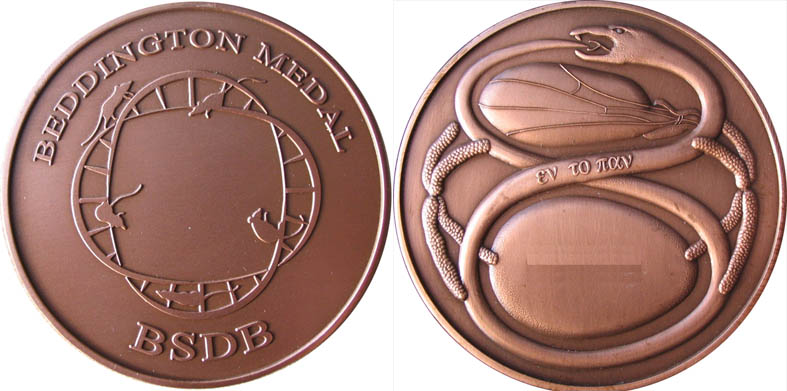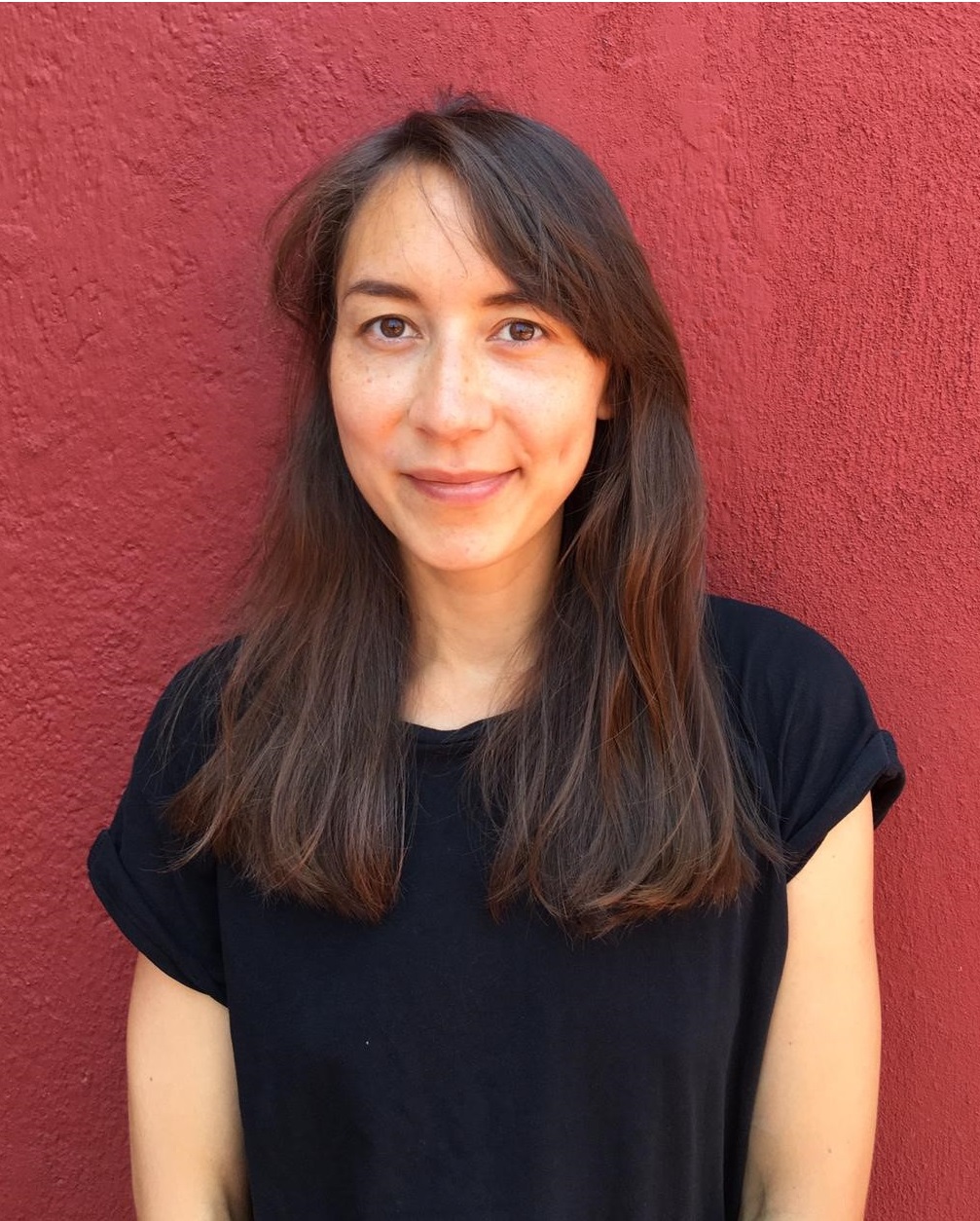An interview with Kristina Stapornwongkul, 2021 Beddington Medal Winner
Posted by the Node, on 23 June 2021
The Beddington Medal is the British Society for Developmental Biology’s major commendation to promising young biologists, awarded for the best PhD thesis in Developmental Biology that was defended in the year before the award.

This year, the Beddington Medal was awarded to Kristina Stapornwongkul, who did her PhD with Jean Paul Vincent at the Francis Crick Institute. Kristina presented her work at the BSDB/Genetics Society 2021 meeting and we caught up with her after the meeting to find out more about her life in science. Be sure to also check out the profile of Kristina – including a letter from JP Vincent and a list of Kristina’s selected publications – over on the BSDB site.

Where were you born and where did you grow up?
I was born in Giessen and grew up in Weil am Rhein. It’s a small town in Southwest Germany, directly at the border of France and Switzerland. It’s one of the sunniest places in Germany and I love to have a stroll through the vineyards whenever I go back there.
When did you first get interested in science?
I was always fascinated by technology and science, but I only developed a real passion for it in the last two years of high school. The realisation that each of our cells contains the information necessary to build an entire human, really blew my mind and made me want to learn more about how cells work.
How did you come to do a PhD in the lab of JP Vincent?
I think it all started with a zebrafish embryo and a stereo microscope. A few years later, at the end of my Masters studies, I knew that I wanted to do a PhD in the field of developmental biology. The UK has an outstanding developmental biology community and so I applied for the Wellcome Trust PhD programme in Developmental and Stem Cell Biology at UCL. As part of the programme, the students get the opportunity to rotate in three different labs. During my rotation, I realised that the Vincent lab was the perfect fit for me, both scientifically and personally.
Tell us about your PhD project: what were the main questions you were trying to answer?
The concept of morphogen gradient-mediated patterning has always fascinated me with its elegant simplicity: a single signalling molecule that can induce multiple cell fates depending on its concentration. How morphogen gradients form and what determines their shape are therefore important questions in order to understand how robust patterning is achieved in tissues. Several mechanisms by which morphogens might spread have been suggested over the years, with passive diffusion being the most parsimonious one. If such extracellular protein gradients form by simple diffusion, it shouldn’t be that difficult to engineer a morphogen gradient, no? At least that was the idea. So instead of further dissecting how natural morphogen gradients are generated, I wanted to test if an inert protein, such as GFP, could be transformed into a gradient-forming morphogen. Apart from probing whether diffusion is sufficiently reliable as a morphogen-transport mechanism, I was hoping that this synthetic approach would also help to uncover general principles and constraints that shape extracellular gradients. To do this work in vivo, I used the Drosophila wing pouch, one of the best studied model systems for morphogen gradient formation.
In your 2020 Science paper you describe your efforts to engineer a morphogen gradient, replacing Dpp with GFP. What did this technique reveal about how morphogens work?
The thing with engineering a synthetic morphogen gradient is that, even if it works, there is no guarantee that natural morphogens work exactly the same way. Nevertheless, our approach enabled us to show that protein gradients can, in principle, form by passive diffusion and that such gradients are reliable enough to pattern a tissue in vivo. It also made it feasible to specifically manipulate properties, such as binding affinities or expression levels, and test their effect on GFP gradient shape. Combining this with a modelling approach, we were therefore able to gain a good understanding of what each component was doing in our synthetic system.
Of course, we encountered several difficulties while building the GFP morphogen system and these were probably the most informative, because natural morphogen gradients that form by diffusion will encounter them as well. For instance, it became clear that secreted GFP can be lost from the tissue and end up in the larval blood, the hemolymph. This was really a big issue for the patterning performance of the GFP gradient. In fact, all secreted morphogens interact to a with components in the extracellar matrix and this is probably one important mechanism to regulate morphogenetic retention in epithelia.
If I had to summarise our findings in a sentence, I would probably say that a combination of high-affinity signalling receptors and low-affinity non-signalling receptors is sufficient to allow diffusing GFP to mimic the organising activity of a natural morphogen.
If you took one abiding memory with you from your PhD, what would it be?
As you can imagine this project involved many ‘trial and error’ experiments, and of course a good amount of luck. When you try to engineer something, it might not work for so many reasons. Even if your general design is good, expression levels might be too high or too low, or your synthetic receptor pair is not recycled efficiently (yes, that was an issue). So I think one of the most abiding memories of my PhD was when I saw for the first time that GFP in combination with GFP-responsive Dpp receptors was able to rescue growth and patterning of the fly wing pretty well. I expected a bit of a rescue, but I never thought that a two-component system could substitute that successfully an endogenous extracellular morphogen system, which not only consists of ligands and receptors but also of many extracellular regulators. My first thought was, ‘I must have messed up the genetics. The rescue is too good’. So, after checking everything three times, I went to JP and showed him the wing. His first response was, ‘Are you sure, you didn’t mess up the genetics?’.
You recently published a review making ‘the case for diffusion’. Why did you need to make this case?
Morphogen-mediated patterning has been studied extensively in a variety of model systems. However, the question of how morphogens spread in a tissue has remained quite controversial, especially in epithelial tissues. For instance, it has been suggested that diffusion is difficult to regulate and not reliable enough to generate robust extracellular gradients. As an alternative, active transport mechanisms, such as planar transcytosis or specialised filopodia (cytonemes), have been proposed. In our review, we try to give a comprehensive overview of the existing evidence from different model systems and conclude that there is strong evidence that morphogens disperse by diffusion-based mechanisms. In particular, we highlight how the tissue architecture and the ligand’s biochemical properties impose constraints on diffusion-based gradient formation and how components of the extracellular matrix help to overcome them.
So after your PhD you’ve recently moved to Barcelona: what are you doing there and how are you finding the city compared to London?
I started as a postdoctoral fellow in Vikas Trivedi’s and Miki Ebisuya’s lab at EMBL Barcelona. We use aggregates of mouse embryonic stem cells as minimal model systems to study symmetry breaking and germ layer specification. London is amazing and definitely has a special place in my heart, but I have to admit that I am really in love with Barcelona. Being able to go for a swim after work and having tons of herbs that happily grow in the sun, is really amazing!
Longer term, do you know if you plan to stay in science?
Working in science is a huge privilege and I really appreciate the chance to interact with so many bright and inspiring people. Currently, I can’t imagine a more enjoyable job. However, being able to stay in science depends on many different factors and so I always try to stay open-minded.
Where do you think developmental biology will be in ten years?
I expect that we will have a much better understanding of the molecular mechanisms of human development. Already now, stem cell-based in vitro systems give us first insights into human organogenesis – a developmental stage in which functional studies were basically impossible before. As a consequence, we will probably also see a much stronger engagement of developmental biologists with the field of disease modelling.
Similarly, our research will depend less and less on the classical model systems. With CRISPR and stem cells, we will probably be able to widen our perspective on development by investigating anything from small insects to large mammals. I think it will be very exciting to see the differences and similarities we can find!
But I’m sure that’s not the only exciting direction developmental biology will take! I think developmental biology will be even more interdisciplinary (if that’s even possible) in ten years. Personally, I’m quite interested in the role of metabolism in development, but I’m sure there are also many more interesting intersections that we will further explore.
When you’re not in the lab, what do you do for fun?
I like to go climbing, swimming, hiking… pretty much all kinds of outdoor activities. Travelling is also a big passion of mine and I hope it will soon be possible again.


 (5 votes)
(5 votes)